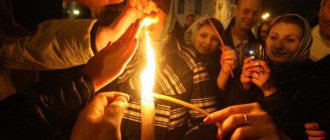Due to age or serious health problems, a person may find himself in a situation where he finds himself “bedridden” as a bedridden patient. Care for bedridden patients in a hospital or at home is most often carried out by close people or relatives.
In most cases, those who provide care do not know how to do this correctly, so that the process is easy for the caregiver and as effective as possible for the immobilized person. We will tell you about simple techniques for properly caring for a patient who is unable to wash himself. Let's start with how to wash the hair of a bedridden patient at home.
How to wash the hair of a bedridden patient without water
A sick person, constantly in a static state, needs careful daily care, including washing his hair. Feeling clean and pleasantly smelling in fresh linen, a person feels more confident in communicating with family and medical staff. In comfortable conditions, it is easier for the patient to experience the difficulties associated with his own weakness.
If this is not critical, then it is recommended to invite a hairdresser to tidy up the patient’s head and give him an elegant haircut. In this case, you can wash the hair of a bedridden patient in a few minutes, even without water, using:
- Disposable cap for washing hair;
- Dry shampoo;
- Cleansing lotion.
Orthodox Life
Answered by Andrey Muzolf, teacher at the Kyiv Theological Academy.
To answer these questions, it is necessary to delve into the history of the establishment of this Sacrament. In the New Testament we find the following words, which indicate the commission of the Blessing of Unction back in the time of the holy apostles. Thus, in the conciliar Epistle of the Holy Apostle James we read: “Is any of you sick, let him call the elders of the Church, and let them pray over him, anointing him with oil in the name of the Lord. And the prayer of faith will heal the sick person, and the Lord will raise him up; and if he has committed sins, they will be forgiven him” (James 5:14–15). St. Nicodemus the Holy Mountain interprets the words of the Apostle as follows: “If someone is sick and lies on his bed, and because of his illness cannot pray or sing praises to the Lover of God, then let him not be uninvolved in spiritual work, which the Good God seeks in illness to send down Your help, but let him take care to call intercessors and mediators to God, church elders, that is, priests or bishops who offer God a pure sacrifice of praise.”
Thus, both from the Apostolic Epistle itself, and from its interpretation by one of the famous Orthodox ascetics, we see that this Sacrament was performed specifically on physically sick people, and those who could not themselves come to the temple to the clergyman.
Today there is a very widespread opinion that the Sacrament of Anointing (also called Unction, since several priests took part in its celebration, often from seven to three, that is, a cathedral meeting) can be performed on all people without distinction, and not just on the physically sick. This practice arose in the Orthodox Church relatively recently (most likely in the post-war period) and is most often explained by the fact that all people are carriers of certain diseases: some more severe, some less so. A definite argument in favor of such a practice can only be some evidence dating back to around the 10th century. They say that the anointing was performed not only on the sick person himself, whose life was in serious danger, but also on everyone in his house. And in one of the Greek manuscripts of the 11th century it is said that along with the sick, not only his household members could receive anointing, but the house, rooms, doors, walls were also anointed with consecrated oil, because a person’s illness affected everyone and everything around. In the 17th century, something similar to the general Unction took place in the Assumption Cathedral of the Moscow Kremlin. In this case, the anointing did not occur seven times, as on the sick, but only once - at the end of the rite.
But a more powerful argument for the practice of general Unction can be called the following: in Unction, in addition to physical illnesses, mental illnesses are also healed, that is, sins, especially forgotten and unconfessed ones (except, of course, for those deliberately hidden, which are not healed by any Sacrament Church), because all human ailments, both mental and physical, are the consequences of sin. Therefore, in order to heal physical illness, sin must be eradicated. This is indeed true, but in this case the sinner should strive for repentance and correction of life, and not for Unction.
Undoubtedly, illnesses are the consequences of sin, but not our personal sin, but that which was committed by our ancestors Adam and Eve and because of which the latter were deprived of the opportunity to communicate with God. As a result of the Fall, the ancestors introduced illness, decay and death into this world. Unfortunately, they are inherited by all their descendants. So even if we had not committed personal sin (and this is impossible, because the tendency of human nature to sin is also a consequence of the Fall), we would still get sick and die. This is the law of human nature. This is very clearly stated in the Catechism of St. Philaret, Metropolitan of Moscow: “Just as from an infected source naturally flows an infected stream, so from an ancestor infected with sin and therefore mortal, naturally comes offspring infected with sin and therefore mortal.”
We can also see confirmation of these words in the Gospel, when the Lord healed a man blind from birth. At the same time, the apostles asked the Lord: “Who sinned, he or his parents, that he was born blind?”, to which Christ replied: “Neither he nor his parents sinned, but this was so that the works of God might be revealed in him” (John 9:2–3). Therefore, physical illnesses are not always and not necessarily related to our sins.
The second controversial point: are sins forgiven in the Sacrament of Unction? To answer this question, you need to understand that in the Church there is nothing superfluous or interchangeable. One Sacrament cannot replace another, since each Sacrament has its own specific purposes. And if sins are forgiven in the Sacrament of Unction, then why, in this case, the Sacrament of Repentance?
In addition, in the very sequence of the Sacrament of Anointing, it speaks specifically about the healing of physical weakness, but at the same time it does not say about the resolution of sins, except in the last prayer. But the last prayer is only a sign that the Sacrament of Unction was often taught in conjunction with other Sacraments - Confession and Communion. We can also see this in the very rite of Unction.
In order not to be unfounded, we give the following examples:
– in the very sequence, the one who receives the Sacrament of Unction is repeatedly called “suffering” and “fiercely suffering,” which refers specifically to physical illnesses;
- in one of the troparions of the canon, the Church prays: “Through the streams of Thy mercy, O Christ, and the anointing of Thy priests, I have been washed, as if I were gracious, O Lord, through sickness and bitterness, and disease invasions, in the needs of the passions, I am tormented, for He glorifies Thee and was saved with gratitude”;
- in the stichera after the canon it is sung: “Thou hast given Thy grace, through Thy Benefactor, O Apostles, Lover of mankind, with Thy holy oil to heal all wounds and ailments; In the same way, he who faithfully approaches Thy oil, and now, as he is blessed with grace, sanctify, have mercy, cleanse from every ailment, and grant Thy incorruptible food, O Lord”;
- but the troparion says more colorfully about the essence of the Sacrament: “O Christ, the only One quick in intercession, show speedy visitation from above to Thy suffering servant, deliver ailments and bitter illnesses; raise up thee in praise and glorify you unceasingly, with the prayers of the Mother of God, the only lover of mankind”;
- at the end of the rite it is said: “After this, the sick person receives the consecration of oil, if possible, he himself enters among the priests, or is kept from his own places, or sits. If he can’t do it himself, the priests themselves will take care of him on his bed. The rector takes the Holy Gospel, and unfurls it, places the letters on the head of the sick person, held by the entire priest.”
Thus, in her prayers, the Church asks, first of all, to heal the bodily ailments of the sufferer and raise him up from his sick bed, which in no way refers to sins as mental ailments.
PS This reflection is not at all an attempt to break anyone’s ideas or change existing religious practice. This is only a call to listen and delve into what is being said to us through liturgical chants and prayers. After all, it happens that we think and pray about one thing, but ask for something completely different.
Cap express shampoo
A special disposable cap, designed for gentle cleansing of the hair and skin of sick people, is made in such a way that it does not require rinsing with water. The procedure for using it is simple:
- Heat the sealed bag in the microwave for 30 seconds.
- We take out a hat that is warm, pleasant to the touch, and smells fragrant.
- Place it carefully on your head.
- Massage the entire surface of the patient's head for 3-4 minutes.
- We take off the cap.
- Dry your hair thoroughly with a soft terry towel.
The result is clean hair, dry clothes and bedding. The patient and his caregiver are satisfied and not tired of the procedure.
Alibasov “fell asleep” after “The Mole” for five days
On June 4, 2019, information appeared in the Russian media about the hospitalization of the producer of the pop group “Na-Na” Bari Alibasov after allegedly being poisoned by the “Mole” cleaning product, which the showman mistook for juice. Two days later it became known that the patient was put into an artificial coma, and on the 11th of the same month Alibasov woke up. Doctors diagnosed burns to the esophagus, stomach and respiratory tract.
Later, Igor Sharipov, a surgeon at the N.V. Sklifosovsky Research Institute of Emergency Medicine, announced inconsistencies in the circumstances of the producer’s poisoning with pipe cleaning fluid. The doctor pointed out one oddity: several housewives worked in Alibasov’s apartment. The likelihood that the cleaning product was in the wrong place is practically zero, the doctor believes. Alibasov was suspected of staging a poisoning, but the producer’s PR director (at that time Vadim Gorzhankin) denied such rumors.
An induced coma, or medical sedation, is like a long anesthesia that can last for many days. The tasks are different, depending on the disease. For example, if a patient needs to be transferred to a ventilator, in his consciousness he will begin to “fight” with the device; the sensation from the tube itself is extremely unpleasant. Therefore, patients are given hypnotics - drugs to make them sleep, and relaxants that turn off all the muscles. And then the ventilator works quietly, achieving the desired effect. Patients with extensive burns can die due to terrible pain; they are also sedated and all procedures are calmly carried out under anesthesia ,” said anesthesiologist-resuscitator Alexey Gaponov in an interview with NEWS.ru.
Bari AlibasovAGN Moscow/Global Look Press
What to do if you see an unconscious person
Confusion is the feeling that most people seem to experience when they see an unconscious person. At the same time, in reality it is quite easy to help: very simple and understandable algorithms have been developed for this. Of course, a person who has completed first aid courses can bring much more benefit, but everyone else, with the help of fairly simple manipulations, is able to naturally save the life of the victim. So, you see a person who lies and shows no signs of life. What to do?
The first rule that everyone forgets is to make sure you are safe. You will run towards a person across the sidewalk and collide with a cyclist. Or you will come across exposed wires near the victim. In general, make sure that you can provide help without harming yourself. If everything is fine, then first you need to understand whether this person really has problems: he can just sleep. To get his bearings, call him and shake his shoulder. Any ambulance worker will tell you that often people don’t do this, they immediately call an ambulance, and it goes to wake up sleeping homeless people or people in a state of intoxication. It seems that this is still not what such a service should do.
But now you shock the person - he does not answer. Then first of all you need to decide how serious it is. Perhaps it is a simple fainting, perhaps the person has died, perhaps his heart is beating incorrectly and he can still be saved. And in an amicable way, further actions should depend on whether the person is breathing or not. Many people immediately rush to check their pulse, but studies show that few people can do it well.
You need to check your breathing according to the following rules:
- turn the person onto his back; - support his chin, press on his forehead and thereby tilt his head back; - bend over and listen for 10 seconds to see if the person is breathing, while simultaneously watching to see if the chest rises.
If there is breathing, you need to put the person on his side and call an ambulance. This position will help him breathe: his tongue will not sink, and he will not be able to choke on vomit. In a situation where you have forgotten how to check breathing, and without this it is not clear whether a person is breathing or not, you can do the same.
How to properly turn an unconscious person onto his right side - Kneel next to him.
- Place his hand closest to you at a right angle to your body, palm up. — Throw the hand farthest from you over your head so that its palm touches the cheek closest to you. - Bend the leg farthest from you at the knee at a right angle. - Turn the person onto their side by pulling on the bent knee. At the same time, his hand farthest from you will protect his head from hitting the floor, and the closest one will not allow his body to roll more than necessary and lie face down. If there is definitely no breathing, then it means that the heart most likely is not beating, you need to call an ambulance and start resuscitation. If you have checked your breathing and hear some strange wheezing, then assume that it is not there. Ideally, you should also send someone to get an automated external defibrillator (AED) and begin chest compressions yourself. And there are several nuances here.
Firstly, if you do not know how to do chest compressions and are very afraid of causing harm by doing it incomprehensibly according to the dispatcher’s orders, then you can limit yourself to turning the person on his side.
Secondly, there are practically no AEDs in Russia (only in rare airports and companies), and the law that was supposed to promote their distribution is stuck in the State Duma.
Probably a lot of people are wondering right now: how can an untrained person use an AED and not kill? The good news is that this type of defibrillator does not shock everyone. This is a small device (no “irons” like in the movies, just stickers with electrodes that are attached to the chest), with simple instructions written on it, and usually in a voice, the defibrillator takes an ECG and asks everyone to move away if a shock is needed. A discharge may be necessary if a person has a serious heart rhythm disturbance (ventricular tachycardia or ventricular fibrillation) and the heart does not pump blood, but simply contracts chaotically. That is, an AED cannot restart a heart that is not beating, but it can restart a heart that is not beating properly. It makes sense to use an AED in the first 10 minutes after loss of consciousness (or better, in the first three). Sometimes several shocks are needed, and between them it is necessary to pump blood using chest compressions. By the way, mouth-to-mouth breathing is now not considered mandatory and dramatically increases a person’s chances of survival. If the rescuer is not trained, then mouth-to-mouth breathing is not recommended at all, especially since there should be enough oxygen in the blood until the ambulance arrives (of course, if this is the case when you are not far from civilization and the ambulance arrives quickly). Trained people can carry mouth-to-mouth breathing masks - they come in miniature sizes, which is very convenient.
In adults, indirect cardiac massage is performed with straight arms, clasping the hands with the knuckles up. In children this can be done with one hand, in infants - with two fingers. You need to apply pressure in the area of the lower half of the sternum (this is the area between the nipples). It is good when the chest is depressed by 5-6 centimeters (in infants - by 4 centimeters). Of course, you can break your ribs this way, but they will heal, and indirect massage can save your life. It is necessary to apply pressure at a frequency of 100-120 beats per minute. If you do this to the rhythm of the song Stayin' Alive, it will do what you need.
But all this cardiopulmonary resuscitation is, of course, very, very difficult to carry out correctly without training, so let us remind you once again about the courses: they are free, take place mostly on weekends, and you can discuss with your superiors the visit of a trainer to your organization. But as a last resort, you can use online courses and all kinds of videos for training. This is considered to be an acceptable alternative. In the meantime, if you use the Telegram messenger, you can contact the bot, which will quickly provide you with an action algorithm.
Summary
If you see an unconscious person:
- Make sure you are not in danger.
- Turn to the person and shake his shoulder.
- If not responding, check your breathing.
- If the person is breathing, turn them to a safe position and call an ambulance. If he is not breathing, call an ambulance, send someone for an AED and begin resuscitation.










